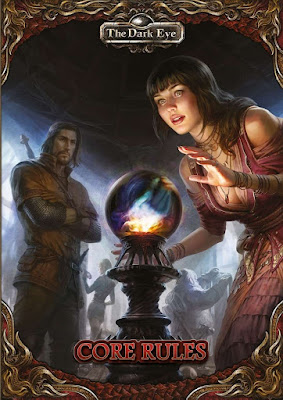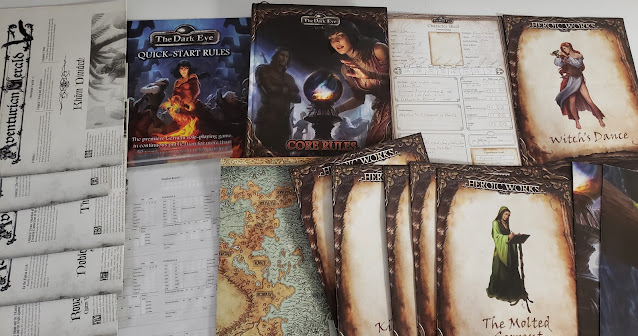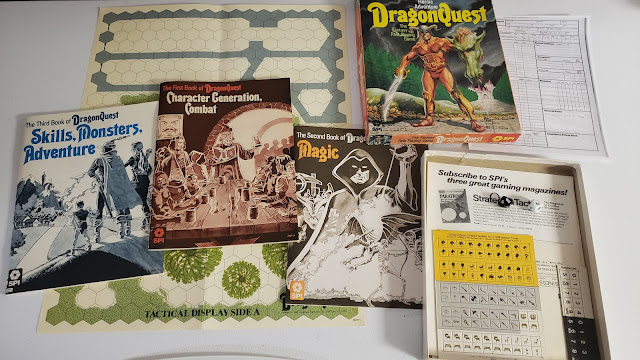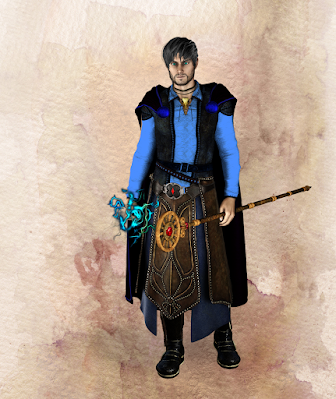
Out of Time is the first campaign for
Tales from the Loop – Roleplaying in the ’80s That Never Was –and quite possibly the last. With
Out of Time,
Free League Publishing brings the award-winning roleplaying game based on the paintings of
Simon Stålenhag to a close. Throughout this alternate childhood of the 1980s, young teenagers have explored rural small-town Sweden, but a rural small-town Sweden in which its streets, woods and fields, and skies and seas are populated by robots, gravitic tractors and freighters, strange sensor devices, and even creatures from the long past. To the inhabitants of this landscape, this is all perfectly normal—at least to the adults. To the children of this landscape, this technology is a thing of fascination, of wonderment, and of the strangeness that often only they can see. In
Tales from the Loop, it is often this technology that is the cause of the adventures that the children—the Player Characters—will have away from their mundane, often difficult lives at home and at school. Taking place at the end of the decade,
Out of Time takes place over the course of year, but has potential to be something more—and all because the campaign involves time travel…
Out of Time begins with a rash of pets and farm animals going missing, followed by flyers asking for information about lost pets going up across the neighbourhood, then rumours of a mechanical contraption seen roaming the fields outside the small communities of the Mälaren Islands. When the Player Characters investigate, they discover the first of many strange experiments taking place, experiments which get stranger and stranger as the campaign progresses. Later, their summer takes a decidedly strange, literally ‘Out of the Body’ turn, which reveals more of the Mystery, before the weather gets randomly worse and storms threaten to shut the region down. Ultimately, to solve the Mystery and even save the world, the Player Characters must sneak out during a lockdown and break into the Facility for Research in High Energy Physics—or ‘The Loop’—the world’s largest particle accelerator, constructed and run by the government agency, Riksenergi. There at last they can discover what links the storms out of nowhere which bring strange mud and sand, the repeated crashes of the magnetrine ship Susi Talvi, the weird flashbacks at their summer camp, and the 1969 moon landing.
The campaigns consists of a trilogy of scenarios—‘The Animal Ark’, ‘Summer Camp’, and ‘The Storm in the Hourglass’. The first takes place just before Christmas, 1988, which only serves to heighten the fractious state of their home lives, but at the same time, there are reports of missing animals, strange devices can be found scattered throughout the area, and a magnetrine ship appears out of a rip in the sky to crash again and again. ‘The Animal Ark’ is quite a short scenario, but does a good job of setting up the campaign, whilst giving the players scope to develop their characters’ home lives. There is advice for the Game Master and suggestions as to what can be added to reflect the heightened anxiety and emotions which seem to occur at Christmas, but many players will have had experiences of their own and can make suggestions of their own too. Essentially setting the scenario at Christmas serves to strengthen the two contrasting strands of a Tales from the Loop game, one being the Game Master presenting the weirdness of its alternative setting and the Mysteries of The Loop, the other being the players exploring the emotional, but mundane complexities of their characters’ home lives.
‘Summer Camp’ moves the time on to the summer of 1989 and the tradition of children being sent to summer camp. Here the Player Characters and other local children are kept busy with a range of outdoor activities, from hut building and gymnastics to orienteering and telling ghost stories round the fire. Things get strange though, when each of the Player Characters wakes up to find that not only is he not in his own body, but he is not in his own time—it is 1969! This presents a challenge for both character and player, as he must negotiate life in an unfamiliar period and negotiate unfamiliar relationships. This is in addition to the ups and downs of life at the summer camp, a strange old man in the woods, and weird dreams… Although replacement characters are provided for the players to roleplay in 1969, one of the options is for the Game Master to create the parents of the Player Characters from back in 1989. Here is a fantastic opportunity for the players to roleplay their characters’ parents and what they were like as children. However, this will take some extra effort upon the part of the Game Master to set up and develop, but the emotional payoff, as the Player Characters realise that their parents had Mysteries of their own to solve and weirdness going on around them just as their children do in 1989, is a great piece of storytelling…
‘The Storm in the Hourglass’ brings the campaign and the 1980s to a close. Set in the autumn of 1989, the storms back in ‘The Animal Ark’ appear again and begin to escalate, forcing the authorities to declare an emergency as the weather worsens. ‘Men in Black’ are seen around the Mälaren Islands as ‘time bubbles’, which when the Player Characters investigate, turn out to be unstable, appear across the region. There are indications too that the technology which has been a fixture of the Player Characters’ childhood is malfunctioning, including the Loop itself. The climax of the campaign will see the Player Characters hopping from time bubble to time bubble and breaking into the Graviton at the heart of the Loop, there to confront their antagonist and the threat she has created.
Of the three scenarios in Out of Time, ‘Summer Camp’ is the longest, mainly because there is a large number of camp activities and events to involve the Player Characters in before anything strange happens. Potentially, this may unbalance the tension between the ordinary and outré strands of a typical Tales from the Loop scenario. Probably the best solution would be for the Game Master to tailor the camp activities and events to the Player Characters to avoid this. As the campaign progresses though, it does grow in complexity, especially in the finale with all of the hopping from time bubble to time bubble.
As a campaign, Out of Time introduces an aspect intrinsically excluded from TTales from the Loop, and that is the potential death of a Player Character. In 1969, the Player Characters are threatened by the campaign’s antagonist with a gun—and she is not afraid to use it. Now in this sequence, it is not as much of an issue, since the Player Characters are not in their bodies, but it highlights the greater peril they face in the campaign. Of course, if the Game Master has decided to port the Player Characters back into their parents, it amplifies the peril, even threatening a Grandfather Paradox should one of the parents be shot and die… Back in 1989, there is the possibility that the Player Characters will fail and unlike in previous scenarios for Tales from the Loop, that has world-ending consequences…
The possibility of the Player Characters facing their death in Out of Time foreshadows another possible option for the campaign, which is to run it as a link between Tales from the Loop and its nineties sequel, Things from the Flood, where death for the Player Characters is a possibility. The authors suggest that the final part, ‘The Storm in the Hourglass’ be shifted forward to 1994 when the ‘Mälarö Leak’ occurred, hot, brown liquid bubbling up out of the ground, forcing an evacuation that would last for years, flooding the Loop, and precipitating to a scandal that would force the Swedish government to shut down Riksenergi and sell the Loop. The advice on this is perhaps somewhat underwritten and it does mean that there is a much longer gap between the events of ‘Summer School’ and ‘The Storm in the Hourglass’, during which time events will have moved out of the framework for Tales from the Loop. However, Out of Time does provide options which would bridge this gap.
The first option is a nonet of ‘Secret Places’, a Mystery Landscape which fits both the 1980s of Tales from the Loop and the 1990s of Things from the Flood. These range from the strange platforms, mechanical marvels, and scrap ships being seen throughout the area of ‘Castle in the Sky’ to the lone concrete foundation with a single hatch which appears having thrust up from the ground in ‘Extra Life’. All of the Mysteries come with an explanation as to the Truth, Hooks, Countdown, and the Antagonist, and can be easily slotted into a Game Master’s campaign or expanded as necessary. The second option is ‘The Mystery Machine’, a set of tables for inspiring and generating Mysteries of the Game Master’s own design, whilst the third, ‘The Mix-CD of Mysteries’ presents an octuple of Mysteries based on eight classic CD tracks from the nineties, such as Nirvana’s Smells Like Teen Spirit and Pulp’s Common People. Again, these come with an explanation as to the Truth, Hooks, Countdown, and the Antagonist, and can be easily slotted into a Game Master’s campaign or expanded as necessary. Again, just like the Mystery Landscape of ‘Secret Places’, they will need some development upon the part of the Game Master. However, most of the tracks listed come from the mid to late nineties and so thematically, do not quite bridge the gap between Tales from the Loop and Things from the Flood as well as a wider selection might do. In many cases, the mature nature of the lyrics and the Mysteries they inspire better suit the nineties and thus Things from the Flood than they do Tales from the Loop. Nevertheless, thematically they can be used to foreshadow the nineties and events of Things from the Flood and of course, inspire the Game Master to write her own using other lyrics.
Physically, Out of Time is as well presented as you would expect for a Tales from the Loop title. Of course, it highlights Simon Stålenhag’s fantastic artwork, but the writing is also good and the layout is clean, tidy, and accessible. All three scenarios follow the same format, making them easy to access and relatively easy to run.
It is great to finally have a campaign for Tales from the Loop, even if it is bringing the decade and the roleplaying game to a close. It should be no surprise that the campaign is challenging given it involves time travel, and although the plot is given a clear diagram for the Game Master to follow, it is complex and will require her to read through the plot with some care. With that preparation, Out of Time is a fantastic campaign, presenting the Player Characters with a challenging and enjoyably complex mystery, a mystery which brings Tales from the Loop to the conclusion it deserves.
 We are in the last week of this Character Creation Challenge. I wanted to spend this last week on modern games. That is games that take place in modern times. Yesterday was Chill, today I am going to go with what might the game I love more than D&D. C. J. Carella's WitchCraft RPG.
We are in the last week of this Character Creation Challenge. I wanted to spend this last week on modern games. That is games that take place in modern times. Yesterday was Chill, today I am going to go with what might the game I love more than D&D. C. J. Carella's WitchCraft RPG.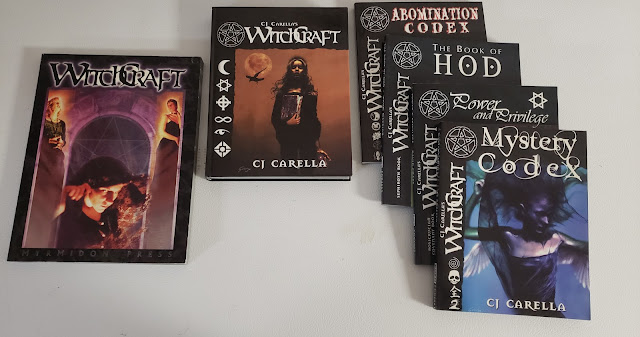
 Fiona
Fiona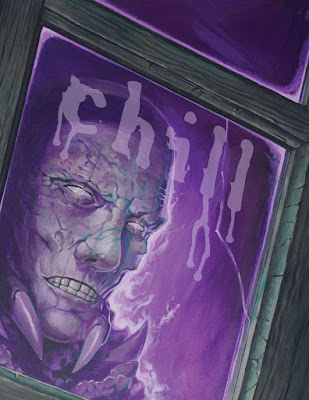

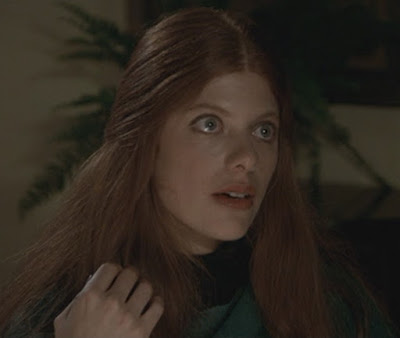

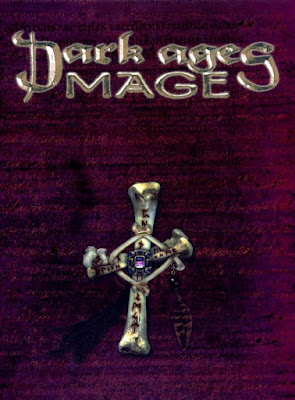





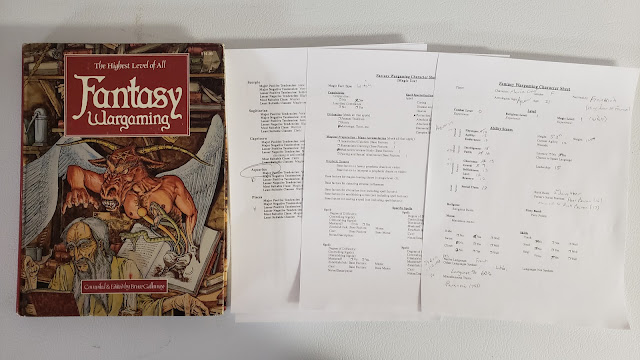











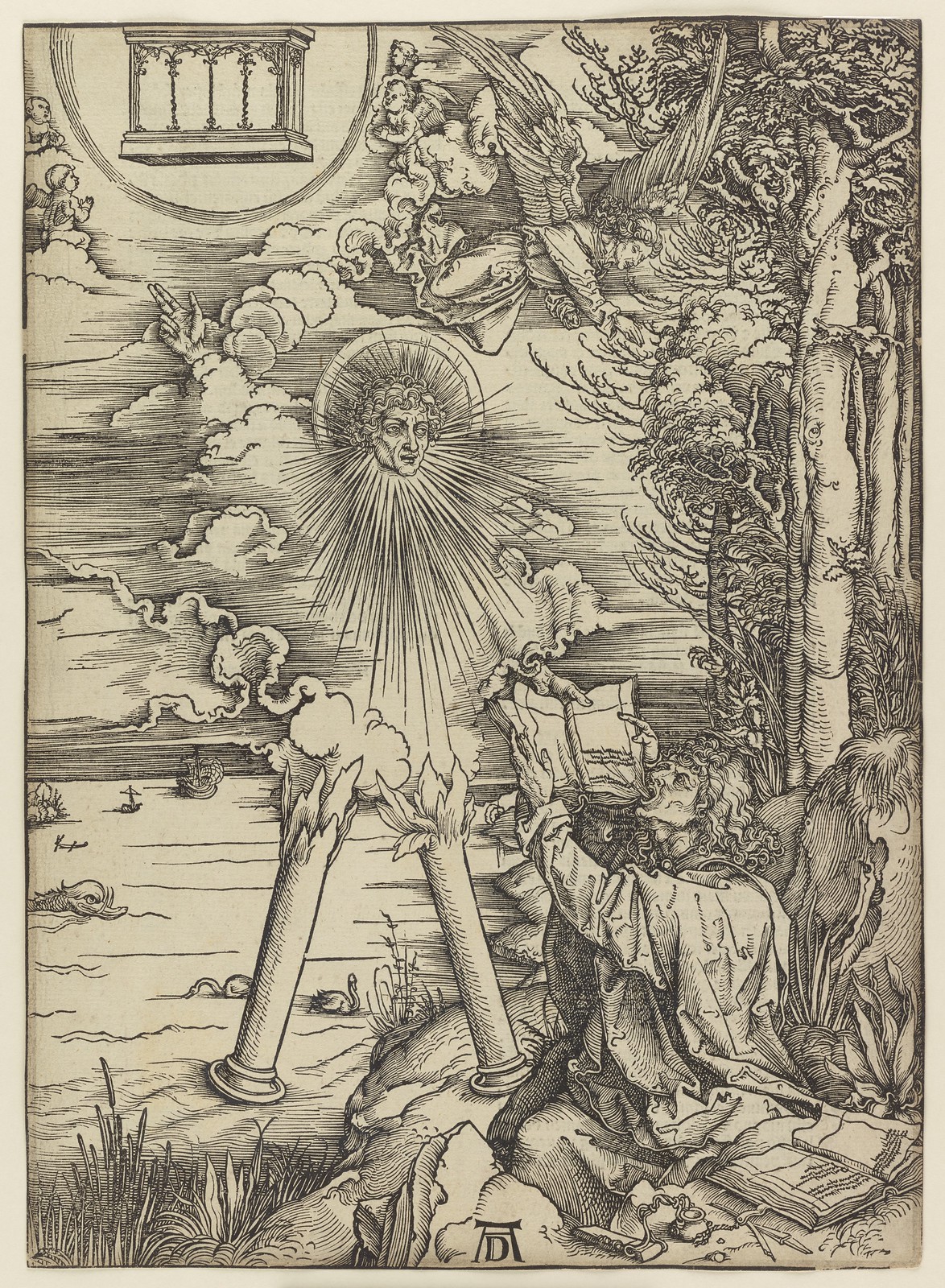



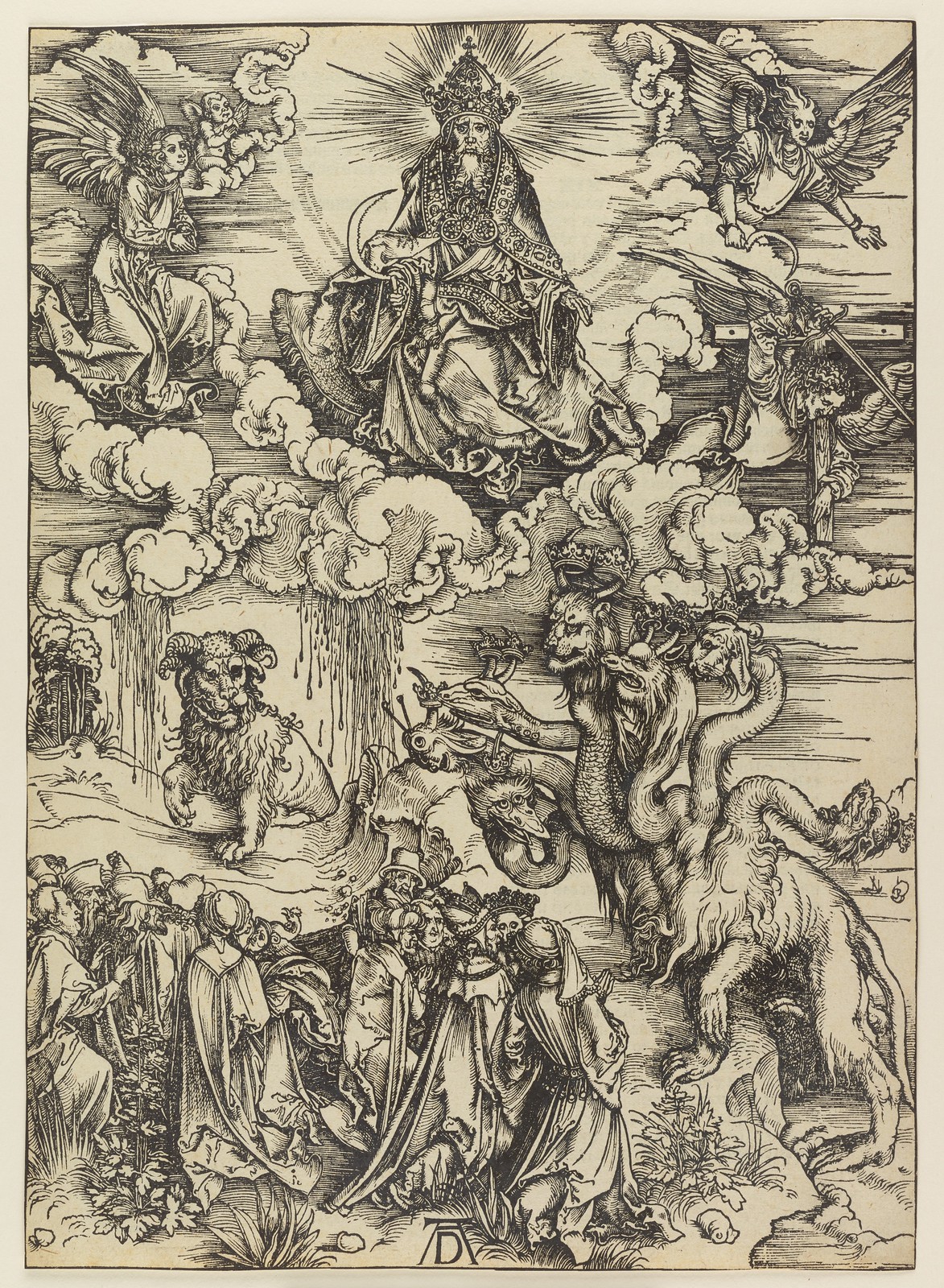









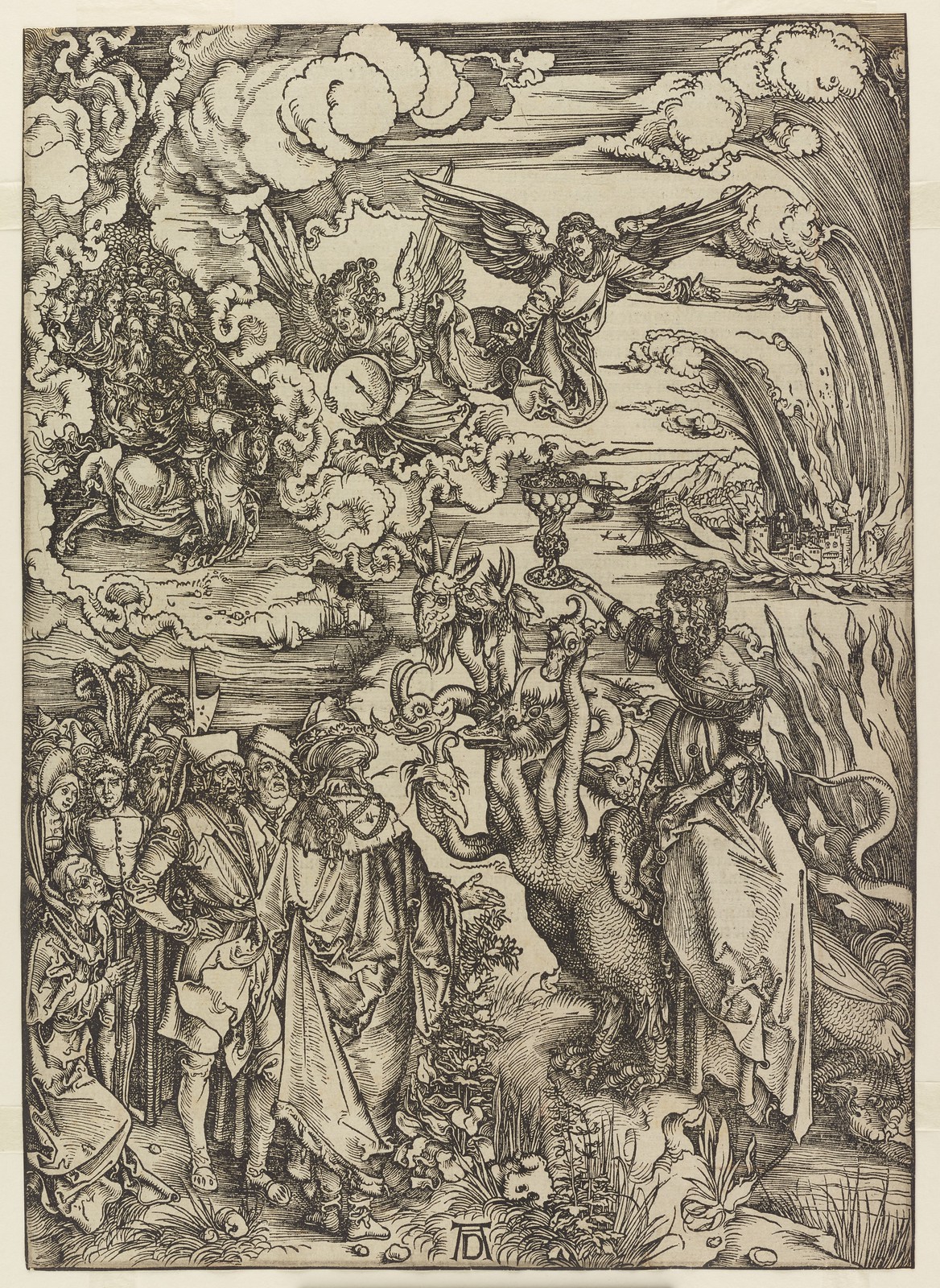

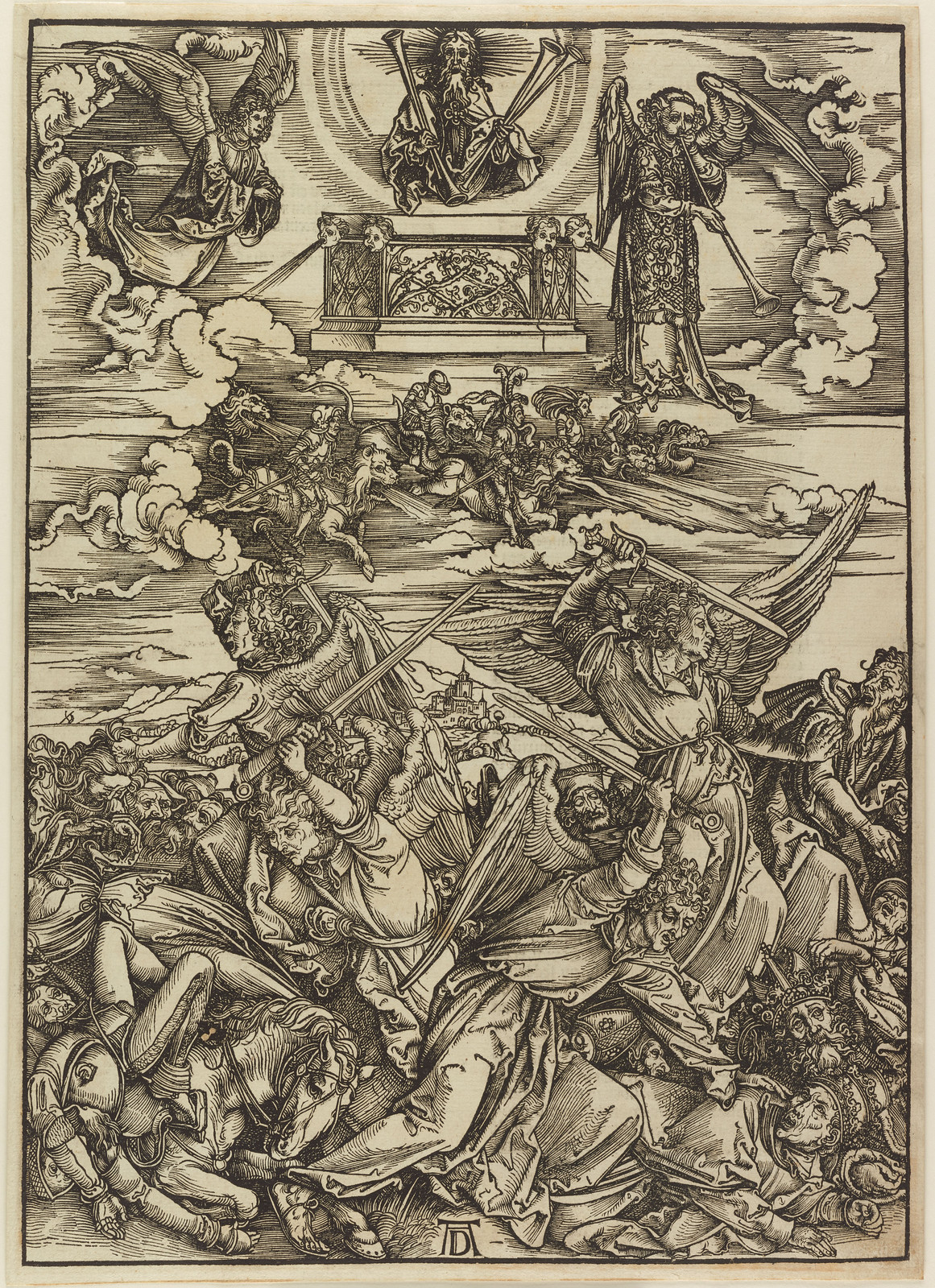




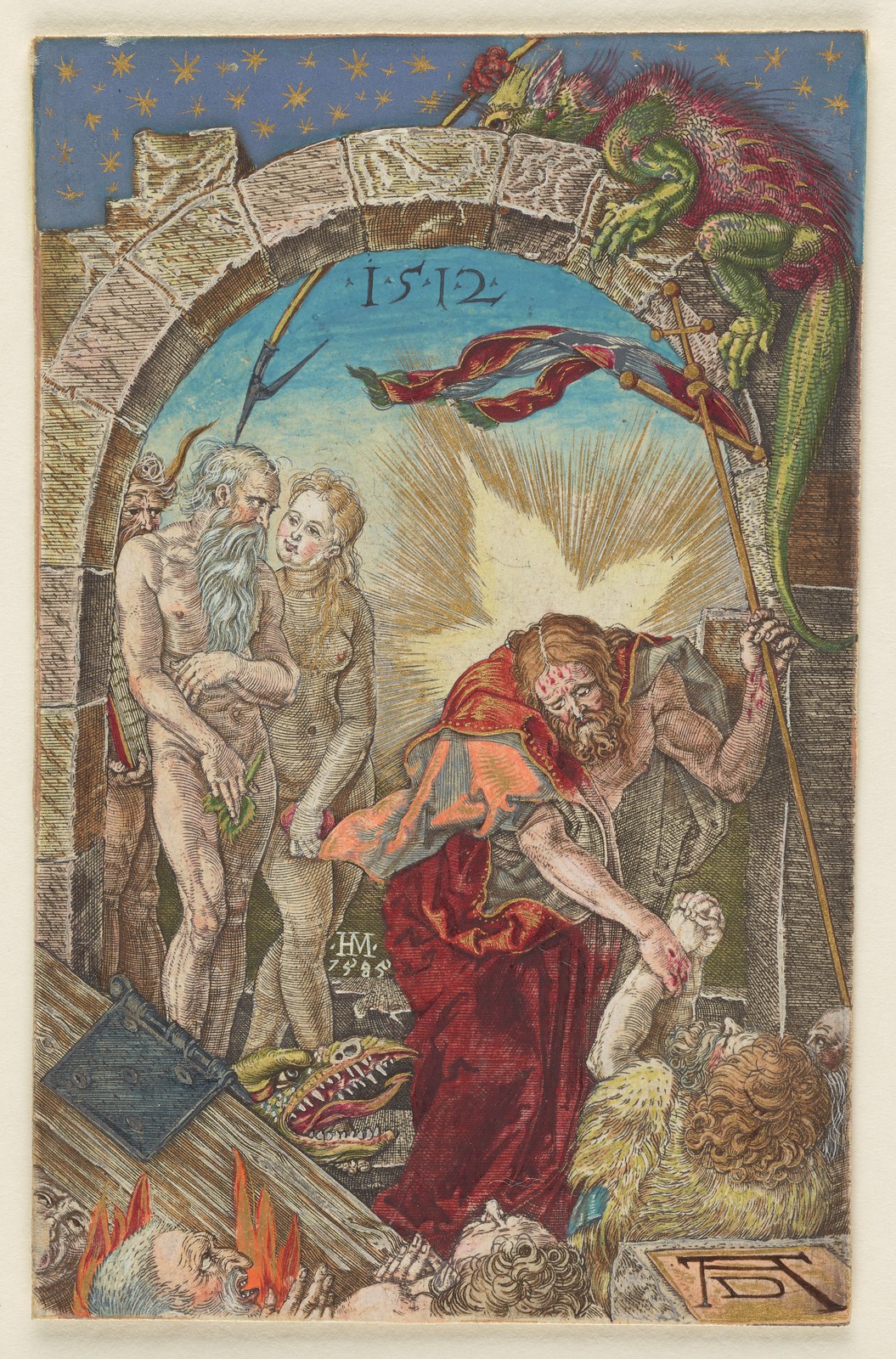

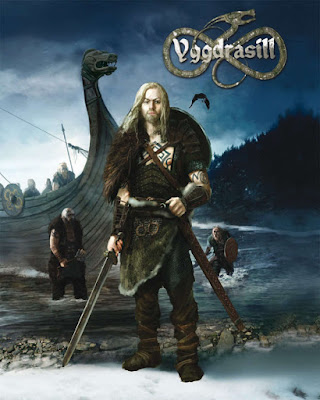

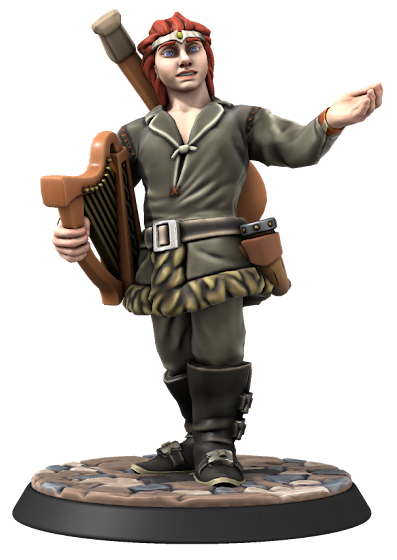
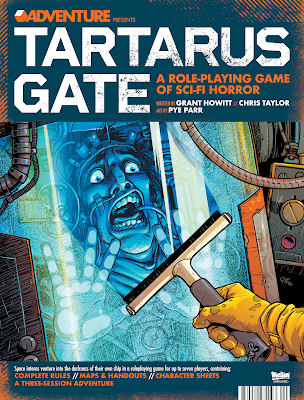
 Fabri-Kate, mistress of fabrication–naturally.
Fabri-Kate, mistress of fabrication–naturally.
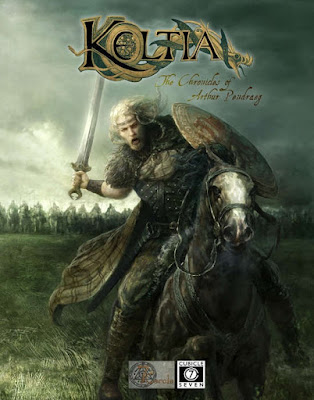
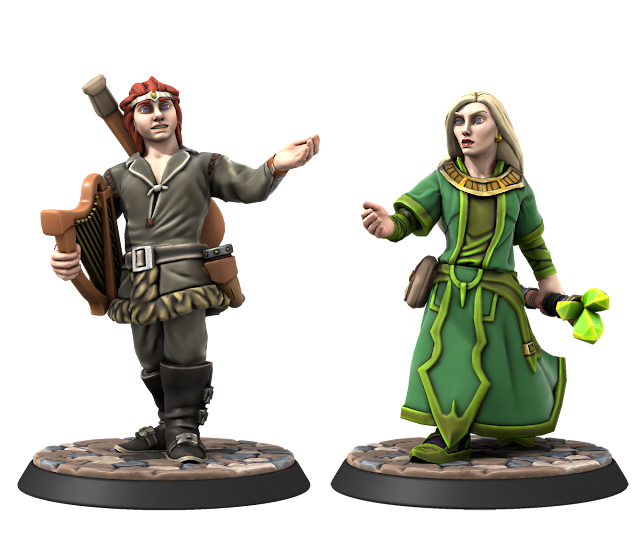
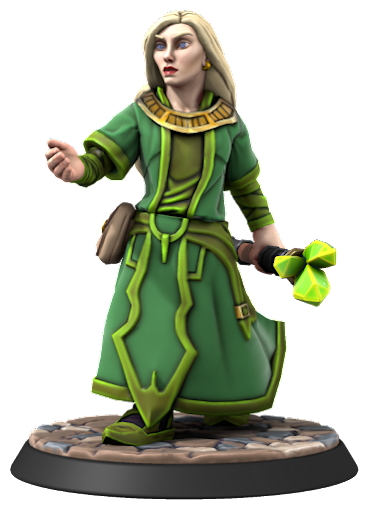
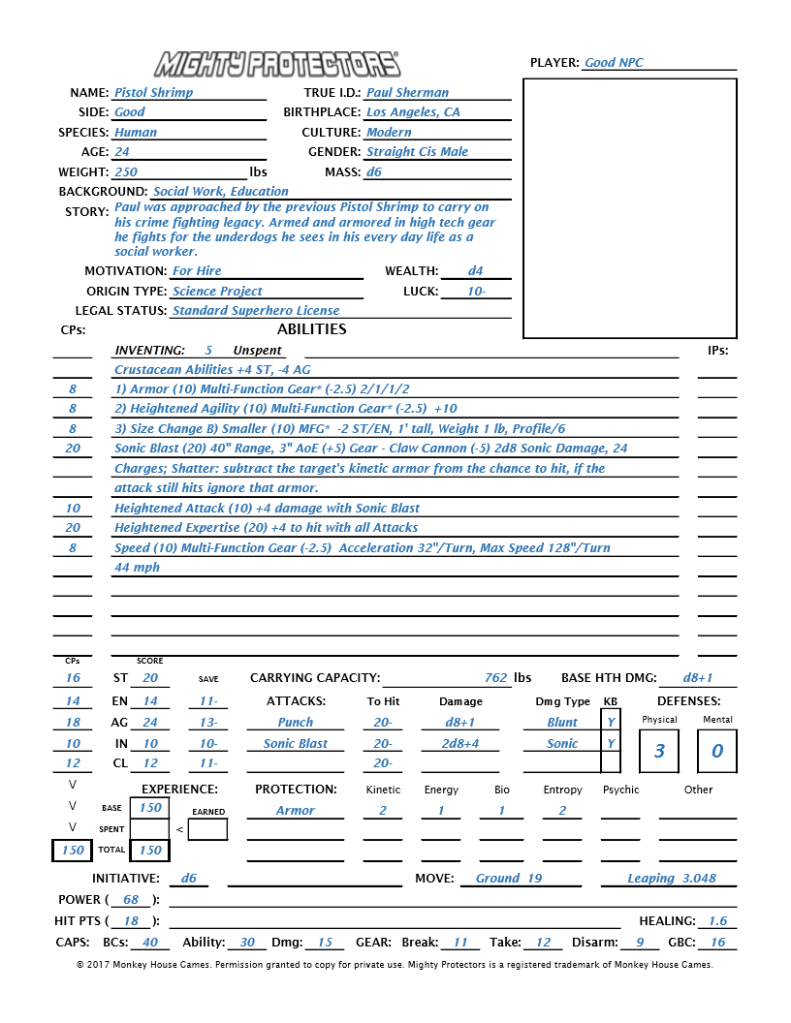 The Pistol Shrimp, protector of the vulnerable.
The Pistol Shrimp, protector of the vulnerable.
